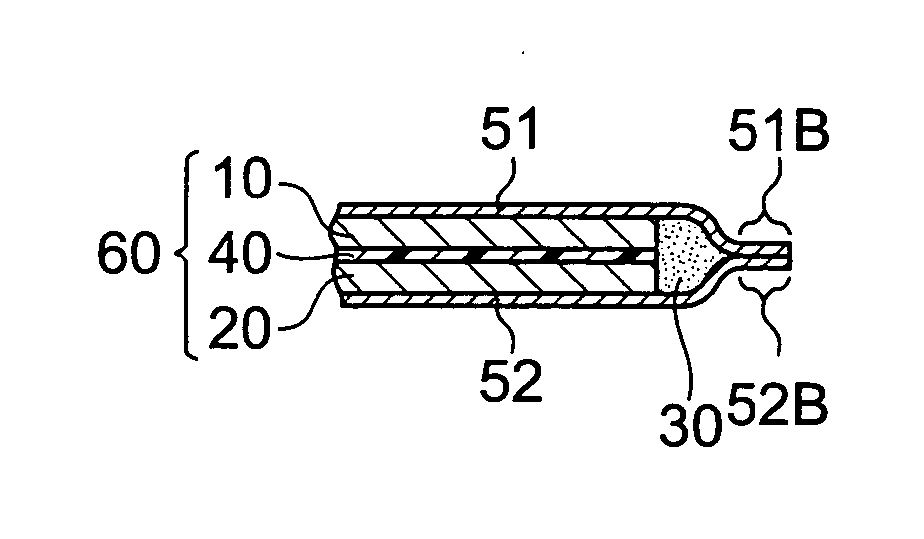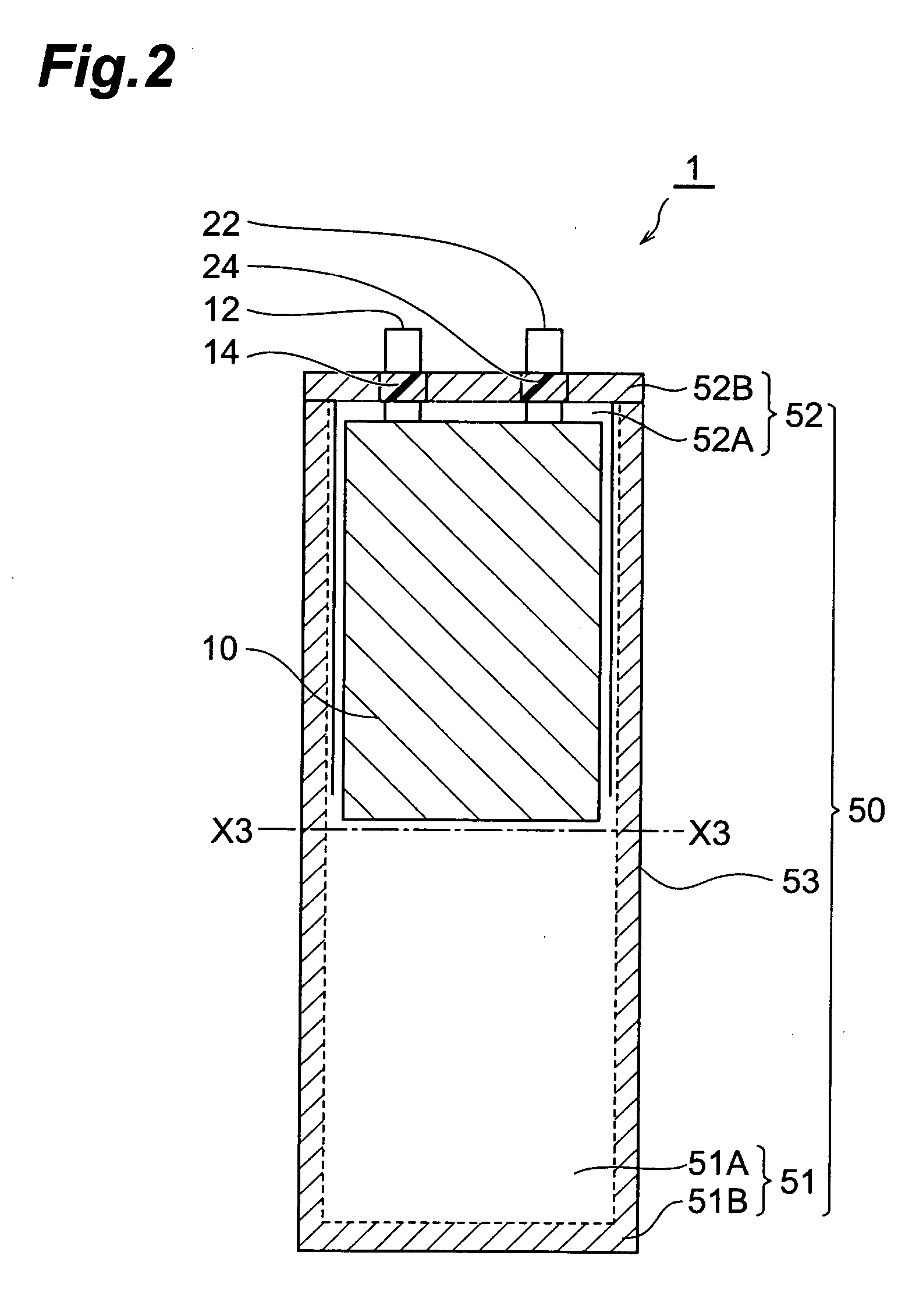Method for manufacturing electrochemical device
a manufacturing method and electrochemical technology, applied in the manufacture of capacitors, cell components, jackets/cases materials, etc., can solve the problems of inability to reliably mount the electrochemical device of electronic devices, and the failure of the electrochemical device mounting device, so as to ensure the thermal fusion strength, the effect of sufficient mechanical strength and sufficient flexibility
- Summary
- Abstract
- Description
- Claims
- Application Information
AI Technical Summary
Benefits of technology
Problems solved by technology
Method used
Image
Examples
example 1
[0145] In the following procedure, an electrochemical capacitor (electric double layer capacitor) having the same configuration as with the electrochemical capacitor shown in FIG. 1 was made.
[0146] (1) Making of Electrode
[0147] An anode (polarizable electrode) and a cathode (polarizable electrode) were made by the following procedure. First, an activated carbon material, a binder (fluorine rubber), and a conductive auxiliary agent (acetylene black) were compounded such that the mass ratio of carbon material / binder / conductive auxiliary agent=80:10:10, and the resulting product was put into MIBK (methyl isobutyl ketone) and kneaded therein, so as to prepare an electrode forming coating liquid (hereinafter referred to as “coating liquid L1”).
[0148] Next, the coating liquid L1 was uniformly applied onto one surface of a collector (having a thickness of 50 μm) made of an aluminum foil (both faces of collectors in electrodes disposed within a matrix since a plurality of anodes, separat...
example 2
[0159] In place of the leads used in Example 1, those having a different thickness (with a width of 10 mm, a length of 25 mm, and a thickness of 3.00 mm) were employed. Accordingly, an electrochemical device was made by the same procedure under the same condition as with the electrochemical device of Example 1 except that the cross-sectional form of the groove 91A of the die 91 used for drawing was a trapezoid (having an upper base of 10.3 mm, a lower base of 10.5 mm, and a height (thickness) of 3.00 mm), and that the cross-sectional form of the groove 93A of the first thermal fusion die 93 used for thermal fusion was a trapezoid (having an upper base of 10.3 mm, a lower base of 10.5 mm, and a height (thickness) of 3.00 mm).
example 3
[0160] In place of the leads used in Example 1, those having a different thickness (with a width of 10 mm, a length of 25 mm, and a thickness of 0.10 mm) were employed. Accordingly, an electrochemical device was made by the same procedure under the same condition as with the electrochemical device of Example 1 except that the cross-sectional form of the groove 91A of the die 91 used for drawing was a trapezoid (having an upper base of 10.3 mm, a lower base of 10.5 mm, and a height (thickness) of 0.10 mm), and that the cross-sectional form of the groove 93A of the first thermal fusion die 93 used for thermal fusion was a trapezoid (having an upper base of 10.3 mm, a lower base of 10.5 mm, and a height (thickness) of 0.10 mm).
PUM
| Property | Measurement | Unit |
|---|---|---|
| thickness | aaaaa | aaaaa |
| thickness | aaaaa | aaaaa |
| thickness | aaaaa | aaaaa |
Abstract
Description
Claims
Application Information
 Login to View More
Login to View More - R&D
- Intellectual Property
- Life Sciences
- Materials
- Tech Scout
- Unparalleled Data Quality
- Higher Quality Content
- 60% Fewer Hallucinations
Browse by: Latest US Patents, China's latest patents, Technical Efficacy Thesaurus, Application Domain, Technology Topic, Popular Technical Reports.
© 2025 PatSnap. All rights reserved.Legal|Privacy policy|Modern Slavery Act Transparency Statement|Sitemap|About US| Contact US: help@patsnap.com



